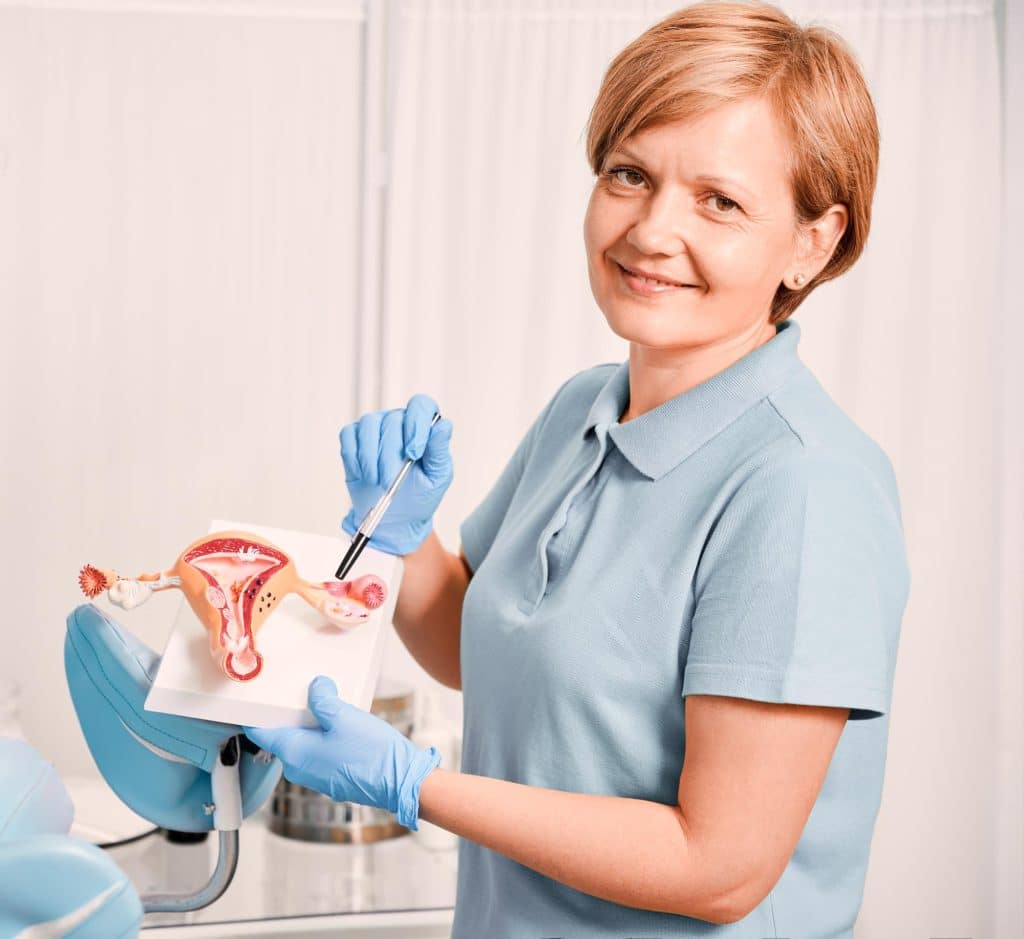Kyleena: Uses, Dosage, Side effects and Interactions

- Kyleena
- 22 Aug 2023
Overview
What is Kyleena?
Kyleena is an IUD that may stop conceptions for up to five years. Kyleena is one of the lower dose versions of available Mirena. The generic name of Kyleena 1Overview| Researched based study from Medicines.org.uk is Levonorgestrel.
A hormone-releasing device called Kyleena is implanted in the uterus to prevent conception for up to five years.
The levonorgestrel (LNG) progestin hormone is released via this hormone-releasing system. It is a form of intrauterine device (IUD), and is often used in birth control tablets.
Kyleena belongs to progestin class of medications, which alters the uterine lining and thickens cervical mucus to make it difficult for implantation and fertilization.
A healthcare professional inserts this drug. It is a T shaped tiny, flexible, plastic device, into the uterus.

How does Kyleena work?
This is how Kyleena functions:
- Releases progesterone
- Increasing cervical mucus thickness
- Preventing sperm from moving
- Kyleena will weaken the uterine lining, making it less responsive to implantation.
- Suppress ovulation
When administered properly, Kyleena has a very low failure rate and a high level of efficacy. It may prevent conception for up to 5 years before needing to be renewed, making it a long-acting reversible contraceptive alternative.
Uses
Uses of Kyleena
Here are a few indications of Kyleena:
- Contraception
- LARC (long-acting reversible contraception)
- Heavy menstrual bleeding management (off-label use) 2Uses| Researched based study from Nlm.nih.gov
Contraception
- A very powerful technique of birth control is Kyleena. Levonorgestrel, a progestin hormone, is released into the uterus to offer long-term contraception.
- The contraceptive pill stops sperm from moving, thins the uterine lining, thickens cervical mucus, and even stop ovulation.
LARC (long-acting reversible contraception)
- Kyleena is a LARC technique, which means it offers reliable birth control for a long time.
- The IUD is a practical alternative for women who want continuous defense against pregnancy without having to remember to take a daily pill or utilize other birth control methods since it needs little care after it is implanted.
Heavy menstrual bleeding management (off-label use)
- Some doctors may use it off-label to treat menorrhagia, which is excessive menstrual bleeding.
- Some people may see a decrease in menstrual blood flow as a result of the progestin hormone, which helps relieve painful periods.
It’s crucial to understand that Kyleena does not provide sexually transmitted infections protection. It can be used by those who are sexually active and want effective contraception.
Side effects

Side effects of Kyleena
If you’re considering receiving the Kyleena IUD, it’s important to talk to your doctor about the risks involved.
The following are the notable negative effects of the drug kyleena:
- Amenorrhea
- Changes in menstruation
- Pelvic discomfort
- Cyst in the ovaries
- Migraine
- Breast tenderness
- Nausea
- Acne
- Weight fluctuations
- Mood shift
- Relocation or explosion
- Pelvic infection
Amenorrhea
- Amenorrhea, or the inability to get periods, is a side effect of using Kyleena.
Changes in menstruation
- Common adverse effects include spotting, irregular bleeding, changes in menstrual cycles, particularly in the months immediately after implantation.
- Some females may have milder periods, others may endure heavy or prolonged bleeding.
- To prevent pulling the threads of Kyleena 3Side effects| Researched based study from Clinicaltrials.gov , exercise caution while changing tampons or menstrual cups. The use of sanitary pads is advised.
Pelvic discomfort
- Following Kyleena implantation, some people may feel mild to severe pelvic discomfort or cramps. Usually, this soreness goes away within a few days or weeks.
Cysts in the ovaries
- Ovarian cysts, which are often benign and frequently go away on their own without creating symptoms, are a risk that may be increased by Kyleena.
Migraine
- Due to Kyleena’s progestin-induced hormonal alterations, headaches or migraines may develop.1Side effects| Researched based study from Medicines.org.uk
Breast tenderness
- Some people could feel pain or soreness in their breasts.
Nausea
- An upset stomach or nausea might happen, especially during the early phase of adjustment.
Acne
- In certain situations, Kyleena may make acne worse or result in fresh outbreaks.
Weight fluctuations
- While using Kyleena, some people may notice a minor weight increase or reduction.
Mood shifts
- Possible negative effects include mood swings, changes in mood, or depressive symptoms.
Relocation or expulsion
- The IUD may be dislodged or ejected from the uterus, which might lead to an unplanned pregnancy.
Pelvic infection
- IUD placement carries a small but potential risk of pelvic infection.
It’s crucial to remember that most Kyleena side effects are often minor and become better with time. However, it’s essential to get in touch with your doctor for further assessment and advice if you experience severe or chronic side effects.
Dosage
Dosage
- Kyleena’s single version is meant to work for up to 5 years after administration to prevent pregnancy.
- There are 19.5 mg of progestin hormone in a single dose form of Kyleena.
- It does not need daily administration like some other forms of contraception and continually releases an adequate amount of levonorgestrel to prevent conception.
When should Kyleena be started?
- Within 7 days of onset of periods, kyleena should be administered. No more birth control is required along with it. It is also possible to administer Kyleena at any other point in your cycle if it is known for sure that you are not pregnant.
- If Kyleena is inserted in females after 7 days of the start of periods, then it is advised to use a different method of contraception like condom or diaphragm, or forgo sexual activity for the upcoming 7 days. Kyleena cannot be used as a last-minute contraceptive.
- After five years, if you still want to use Kyleena, your doctor may add a new IUD just after removing the old one. You could conceive if the same Kyleena has been in existence for more than five years.
When to remove Kyleena?
- If you aim to become pregnant, your doctor will simply extract Kyleena from you.
- If you had sexual contact the week before Kyleena was removed, you could get pregnant.
Forms
- The body of Kyleena® is a tiny, white, T-shaped piece of malleable plastic.
- The T-body’s horizontal and vertical arms each measure 3 cm in length.
- Levonorgestrel is present in a small, cylindrical reservoir that surrounds the vertical arm.
- The tip of the vertical arm is connected to two tiny blue plastic threads.
How to utilize this medication?
- The intrauterine device (IUD) is inserted by a medical professional within one week of the onset of menstruation.
- A gynecological examination is conducted by the doctor before inserting the device.
- It ensures proper placement of the device 4Dosage| Researched based study from Kyleena-us.com in the uterus and to rule out any gynecological conditions or pregnancy that may make the use of levonorgestrel unsuitable.
- The device is inserted during a routine visit with a healthcare professional.
- Follow-up appointments are required after the insertion of the device, with the first appointment occurring approximately 4 to 12 weeks later to confirm proper positioning.
- The device has a maximum recommended duration of 5 years, at which point a decision must be made regarding replacement or removal.
Storage
Storage
- Kyleena should be stored at a regulated room temperature, typically ranging from 20°C to 25°C (68°F to 77°F).
- It is advisable to store and retain kyleena in its original packaging. It is recommended to maintain the Kyleena IUD in the original sterile wrapping until it is prepared for insertion by a healthcare professional.1Storage| Researched based study from Medicines.org.uk
Precautions
Precautions and warnings
There are several factors that can influence the appropriate usage of this medication:
Blood clots
- This medication has the risk of blood clot formation, which can lead to decreased blood circulation to organs.
- It might lead to blood clot-related complications, like stroke, heart attack, and deep vein thrombosis.
Depression
- Progestin has been identified as a factor that can influence mood swings and depressive symptoms.
- If you show symptoms of depression, like impaired concentration, weight fluctuations, sleep disturbances, or disinterest in activities, it is important to consult your doctor.
Diabetes
- Women with diabetes or a family history of diabetes should closely monitor their blood sugar levels when using low-dose contraceptives, as these devices typically have minimal impact on blood sugar control.
Blood pressure
- Levonorgestrel has the potential to raise blood pressure levels. If there is a rise in blood pressure following the insertion of this device, it is advisable to consult a medical professional.
Menstrual bleeding
- Certain women feel discomfort and bleeding during the insertion or removal of the device. Irregular menstrual bleeding is a common occurrence during the initial months following the insertion of the device.
Ectopic pregnancy
- It is the implantation defect where the fertilized egg implants anywhere outside of the uterus. Consult your doctor before using this device if you have a medical history of ectopic pregnancy, or fallopian tube surgery.
Device expulsion
- Abdominal pain or bleeding may suggest displacement or expulsion of the device from the uterine cavity. An improperly positioned device shows reduced effectiveness and requires replacement with a new device.
Perforation
- The chances of the IUD device causing puncture to the cervix or uterus is extremely low. If it were to happen, the most probable time would be during device insertion. If such an event occurs, it is imperative to promptly remove the device.
Heart disease
- Levonorgestrel has been associated with an increased risk of blood clot formation, which can lead to reduced blood circulation in organs or extremities.
Heart valve disorders
- Kyleena increases the chances of heart valve infection in people with congenital or acquired heart valve defect. Antibiotics are given prior and after the removal of this medication to reduce the risk of infection.
Infections
- During the initial weeks following the insertion of this device, there is a high susceptibility to pelvic inflammatory disease (PID), a severe infection.
- If you experience heavy bleeding, lower abdominal pain, abnormal vaginal discharge, pain during sexual intercourse, fever or chills, it is advisable to seek medical attention.
Eye disorders
- Certain women may encounter alterations in their vision or experience difficulties with tolerating contact lenses.
Headache
- Levonorgestrel, similar to other hormones, has the potential to induce severe headache or migraine.
Liver disease
- Women with a history of liver complications, particularly during pregnancy, may face a risk of liver issues when utilizing this device.
Sexually transmitted infections (STIs)
- This IUD kyleena has not been proven to provide protection against sexually transmitted infections (STIs), including Gonorrhoea, HIV/AIDS.
Can you feel Kyleena during sexual activity?
- It is advised to wait 24 to 48 hours after Kyleena has been inserted before engaging in sexual activity. During sexual intercourse, you or your partner must not be able to feel Kyleena.
- Your spouse could feel the removal threads when you are having sexual contact.
Pregnancy
- Pregnant individuals should refrain from using this device.
- The impact of levonorgestrel on fetal development remains uncertain, and the possibility of adverse effects on the infant cannot be definitively excluded.
- The removal of this device may lead to spontaneous abortion, while retaining it during pregnancy raises the risk of miscarriage or premature delivery.
Geriatrics
- Kyleena is not indicated in females Who have attained menopause.
Breast-feeding
- Hormonal birth control can be transmitted through breast milk. Levonorgestrel use in breastfeeding mothers may have an impact on their infants. Some women who have utilized this medication have experienced a reduction in lactation.
Children
- The levonorgestrel-releasing kyleena IUD is strongly contraindicated for premenarchal girls. The safety and efficiency of this medication has not been proven in girls under the age of 18.
Contraindications
Contraindications
Kyleena has several contraindications:
- Pregnancy status: confirmed or suspected.
- Present or prior pelvic inflammatory disease (PID)
- Recent pelvic infection within the past three months
- Postpartum endometritis and septic abortion
- Uterine or cervical malignancy, whether confirmed or suspected
- Uterine anatomical abnormalities
- Allergic reaction or hypersensitivity
- Breast cancer or other cancers that are sensitive to estrogen or progestin
- Liver disease or liver tumor
- Recent (within the last 5 years) record of trophoblastic disease
How often should Kyleena be checked?
- Approximately 4 to 12 weeks after Kyleena is implanted, at 12 months, and then once a year until it is removed, you should have it examined.
Drug interactions
Drug Interactions
Barium sulfate, copper phthalocyanine, polyethylene, polypropylene, polydimethylsiloxane elastomer, silica colloidal anhydrous, and silver are among the inactive ingredients.
It is crucial to consider that certain medications or substances can affect efficacy, interact with the ingredients or increase complications. For example:
Drugs that enhance the elimination of levonorgestrel
- Levonorgestrel clearance may be increased by certain substances such as barbiturates, oxcarbazepine, primidone, phenytoin, carbamazepine, rifampicin5Interactions| Researched based study from empr.com
Drugs that influence the clearance of levonorgestrel
- The simultaneous administration of sex hormone induced drugs along with certain HIV/HCV protease inhibitors and non-nucleoside reverse transcriptase inhibitors will influence the plasma concentrations of progestin, either by increasing or decreasing them.
Enzyme inhibitors that decrease the clearance of levonorgestrel
- Azole antifungals (e.g., fluconazole, ketoconazole, itraconazole, voriconazole), verapamil, macrolides (e.g., clarithromycin, erythromycin), grapefruit juice are potent and moderate inhibitors of CYP3A4. These substances have the potential to elevate plasma concentrations of the progestin5Interactions| Researched based study from empr.com
Hepatic enzyme-inducing medications
- Certain drugs, such as anticonvulsants or antibiotics like rifampin, can reduce the efficacy of hormonal contraceptives, including Kyleena, by inducing liver enzymes.
Medications that impact bleeding
- Anticoagulant drugs, such as rivaroxaban, dabigatran, apixaban, edoxaban, can increase the risk of bleeding, particularly while using intrauterine device (IUD).
Immunosuppressive medications refer to drugs that suppress the immune system
- Certain immunosuppressive medications, commonly prescribed post-organ transplantation, may potentially heighten the risk of infection associated with the insertion of an intrauterine device (IUD).
Outlook
The Outlook
The intrauterine device (IUD) Kyleena is a very effective and easy method of birth control for women.
When you’re with Kyleena, you’ll feel:
- Persevering Confidence
- Balanced Hormonal Function
- Say “Yes” for lighter periods
- Carefully and securely inserted by experts
- Get Back Together and Regain Your intimacy
This tiny T-shaped device is expertly made to offer long-term birth control, giving women the freedom to make informed decisions about their reproductive health.
Any feedback on this article?
 This Articles content was accurate
This Articles content was accurate Very Informative Article
Very Informative Article I have a question or a comment
I have a question or a comment
 This article contains inaccurate content
This article contains inaccurate content This article was not helpful
This article was not helpful I have a question or a comment
I have a question or a comment
We appreciate your helpful feedback!
Checkout our social pages
References
-
electronic medicines compendium
Kyleena | Overview
-
National Library of Medicine
Kyleena - another levonorgestrel IUS | Uses
-
Clinicaltrials.gov
KYleena Satisfaction Study / Observational Study on User Satisfaction With the Levonorgestrel Intrauterine Delivery System Kyleena (LNG-IUS 12) in New Contraceptive Users and After Switching From Another Contraceptive Method (KYSS) | Side effects
-
BAYER
WHAT YOU SHOULD KNOW ABOUT THE KYLEENA IUD | Dosage
-
Medical Professionals Reference
KYLEENA | Interactions




































